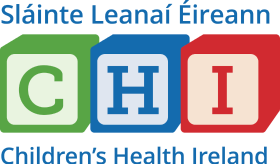Knee pain in growing, active children (Osgood-Schlatter’s Disease)
Osgood-Schlatter’s Disease is a common and harmless cause of knee pain in active children and teenagers. It happens when the tendon that connects the kneecap (patella) to the shin bone (tibia) pulls on a part of the bone called the tibial tuberosity. This can cause pain, swelling, and a bony bump just below the kneecap. This is most common during growth spurts, when bones grow faster than muscles and tendons, causing extra strain. A less common but similar condition, Sinding-Larsen-Johansson syndrome, causes pain where the tendon attaches to the bottom of the kneecap instead.
Who gets it?
Osgood-Schlatter’s typically affects:
- Children aged 10–14 years (boys) and 8–12 years (girls).
- Those going through a growth spurt.
- Active children who do high-impact sports like football, gymnastics, or running,
- Children with tight thigh or calf muscles.
- Those with low Vitamin D levels.
What are the symptoms?
- Pain just below the kneecap, especially after sport.
- Swelling or a bump on the upper shin.
- Tender to touch over the bump.
- Pain that worsens with activities like running, jumping, or kneeling.
- Pain may come and go for months to a few years.
- Usually affects one knee, but can occur in both.
How is Osgood-Schlatter’s diagnosed?
A doctor can usually diagnose it based on your child’s symptoms and a physical examination. X-rays are rarely needed, unless there are unusual features or to rule out other conditions.
For GPs: Treatment and referral recommendations
Treatment focuses on managing symptoms until the condition improves with time:
- Pain relief: Ibuprofen or paracetamol as needed.
- Ice packs: Apply to the knee after activity to reduce swelling.
- Stretching exercises: Focus on hamstrings, quads, and calf muscles.
- Check and treat vitamin D deficiency: Aim for levels above 50 nmol/L
- Activity changes: Switch to lower-impact sports like swimming while symptoms are bad.
- Reassurance: This condition gets better with time, usually within 12–24 months.
Children can still take part in sports if they are comfortable, but may need to reduce certain activities if pain becomes a problem.
Referral
In the following cases, a child may need to be referred to an orthopaedic specialist.
- Pain at night or while resting.
- Pain that is getting worse, not better.
- Swelling in other joints or signs of illness (fever, tiredness, weight loss).
- Pain in the hip or thigh area (could be a different problem).
- Locking, giving way, or clicking in the knee.
Summary
- Osgood-Schlatter’s is a common and harmless cause of knee pain in growing children.
- It is related to growth spurts and physical activity, especially high-impact sports.
- It can be managed at home with stretches, rest, and pain relief.
- Most children grow out of it once their bones stop growing.
- Talk to your GP if symptoms are severe or unusual.

